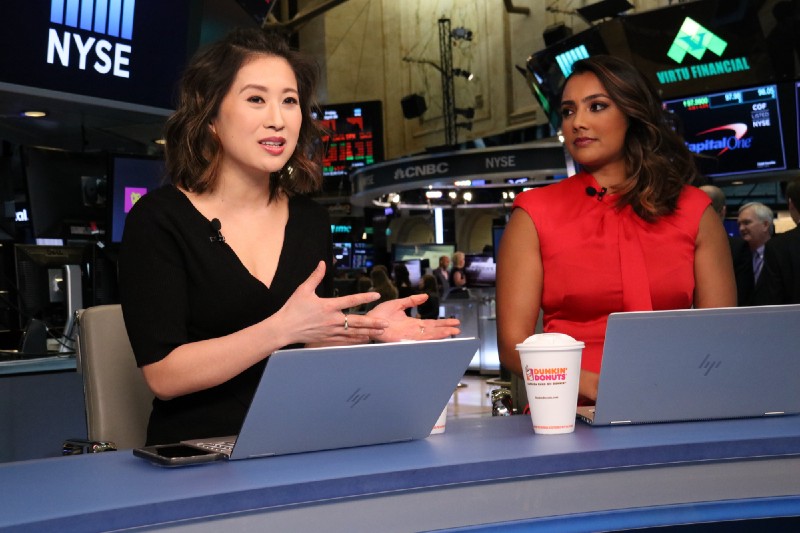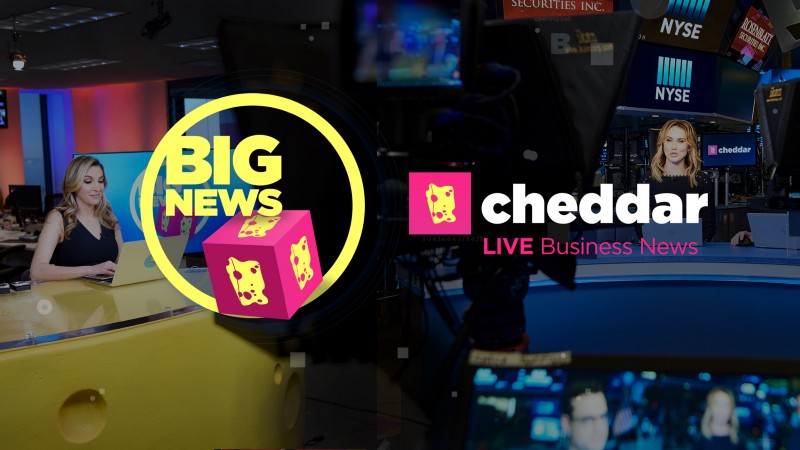Recently, New York-based Cheddar, a live news and entertainment network, raised a $22M Series D round led by Raine Ventures, a media-and-technology investment firm. The startup’s new funding takes its valuation to $160M and reinforces what people in new media have already known: The 18-34 demographic is moving from Cable TV to on-demand viewing.
The media landscape is evolving. People can now watch videos from a variety of sources and across a number of channels. According to Nielsen’s 2017 report, “…93% of streamers watched traditional TV” on an average November day in 2017. “Forty-seven percent of those streamers watched TV only, 46% were reached by a mix of traditional TV and streaming, and 7% streamed exclusively.”
The statistics point to a changing pattern among viewers and hints at a slow but sure beginning of a post-TV era. Cheddar sits at the intersection of technology, media, business and culture” and has risen out of this change.
In 2016, Jon Steinberg, the former Buzzfeed CEO, raised a $3M seed funding and founded Cheddar, calling it a “post-cable network”. Steinberg argues that cable news content “is geared at an ever increasing rate to people in their 60s” while a post-cable network means a “future where cable news networks are rebooted to reach and engage young consumers”.
At the heart of Steinberg’s new venture is his analysis that content is divided into categorizes worldwide: “on-demand dramas and comedies on services like Netflix and Amazon” or shitty videos on Facebook. But, according to him, audiences also want “ambient content” or “The stuff you watch when getting dressed, at work, cooking dinner, doing homework, etc.”
Enter, Cheddar.

Cheddar’s programming is available on Sling TV, Hulu, YouTube TV, Snapchat, fuboTV, Philo, Amazon, Twitch, Twitter and Facebook (PC: Cheddar)
Cheddar initially positioned itself as the “CNBC for Millennials” and began airing commentary and interviews from the trading floor of the New York Stock Exchange (and later its own studio in New York City) and live-streamed them on their own website and Facebook. But since then, Cheddar has evolved into a sophisticated media network that might be up against all other media networks from Buzzfeed to Upworthy but is not their replica.
At a time when TV-quality video is prohibitively expensive, Cheddar managed to cut expenses by working with cloud-based video shooting and editing technology “to make near 4K clips with a one-time equipment cost of less than $200,000.” It was also reported that Steinberg described “Cheddar’s set up as being Google Docs rather than an entire Microsoft Exchange server.”
But briefly in May 2016, the startup put its content behind a paywall where it said that smaller clips would appear “for free on Facebook but full-length CEO interviews would be exclusive for subscribers.” The hope, however, as Steinberg said in an interview, was to get “the end consumer to pay either directly or part of a bundle.”
A bundle doesn’t mean a traditional cable connection. On the contrary, it’s an innovation following the rise of platforms like Netflix, Hulu and Amazon. Users don’t want to be restricted to the offerings of cable TV or even a Netflix alone and want to consume varied content. “Bundles” or “skinny bundles”, therefore, are services such as Sling TV that offer a select number of channels at a reasonable price. They have, according to S&P Global Market Intelligence, captured 5 million households as compared to the 90 million of cable TV. As they are focused on the discerning consumer who is online, they stream online and provide the consumer with on-demand, on-the-go programming and the freedom to pay for only what they see.
Moving away from a subscription model, Cheddar evolved by tying up with multiple partners. It cut a deal with Sirius XM, a radio company, in 2016 where the latter would air Cheddar on one of its channels. It then extended its services for subscribers of Roku, Amazon video and Apple TV and announced a live streaming partnership with Twitter to broadcast “Opening Bell” markets coverage and “Closing Bell” coverage. By November 2016, Cheddar was streaming on Sling TV and had realized its initial ambition of becoming a part of a bundle. Numerous other tie-ups such as fuboTV, Twitch followed.
Explaining their business model and the ecosystem, Steinberg writes: “Post Cable Networks thrive by wholesaling their content to bundles, the bundler thrives, and the consumer gets a great product at an affordable price.” While Cheddar’s videos are currently ad free, the company utilizes product placements or integrates the brand into the programme.

Cheddar News Anchors (PC: Cheddar)
The Post-Cable Network
As of now, Cheddar’s programming is available on Sling TV, Hulu, YouTube TV, Snapchat, fuboTV, Philo, Amazon, Twitter and Facebook. Along with the New York Stock Exchange and its street level studio, the company also broadcasts from WeWork in Los Angeles and the White House. And in addition to business news, Cheddar also has sports and Cheddar Big News, which is a general news network aimed at the young.
In 2017, the startup acquired StockStream, the popular $50,000 crowd-sourced trading platform game hosted on Twitch, along with another small acquisition of Need2Know, a newsletter.
But both Cheddar’s business and lifestyle networks are a way for the former Buzzfeed boss to move away from viral content into niche content. He has explained that people “intentionally” tune-in on these networks as opposed to the viral content that they encounter on Facebook. “Despite viral video content’s viewership achievements, it fails along trust and loyalty dimensions, making it a poor choice for brand builders,” he says. This also explains why existing cable networks with fewer viewers when compared to online viewership of millions make millions in annual revenue, while video producers pulling in billions of monthly views don’t. Cheddar, conscious of these failings, has bridged the gap between being a viral video producer short on loyalty and an inaccessible cable network, and in doing so, has recorded an $18M annual revenue.
It has also established that the time for what it calls post-cable networks is now. At the end of the day, networks like Cheddar are appreciated by viewers because they provide niche, professional content unlike two-minute, dubious viral videos that can be confused with user-generated content. This, according to Steinberg, would help post cable networks spring up and take “share from traditional cable networks in a very short period of time”, just as websites took up a large share–if not gobbled–the newspaper market.
Subscribe to our newsletter



